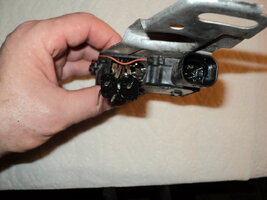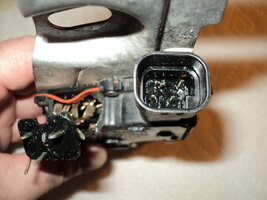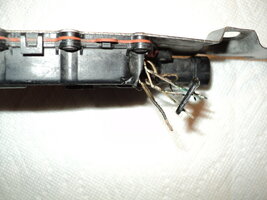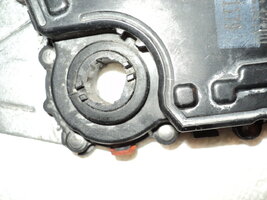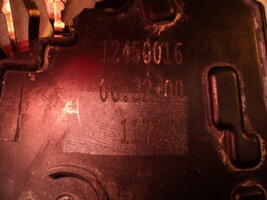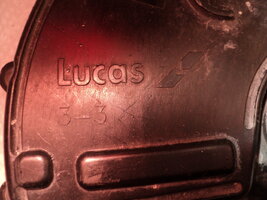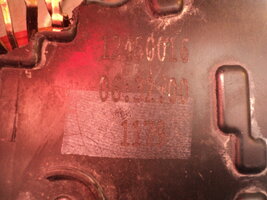Okay... That seems hopeful...Now... unless you have kept the original transmission (assuming its a 4L60E) and the switch is still present on the driver's side of the transmission... DO NOT ATTEMPT TO REMOVE THE TWO ELECTRICAL WIRING HARNESS CONNECTORS BECAUSE THEY ARE HOT-GLUED WITH GORILLA GLUE AT THE FACTORY TO PREVENT EXCESS SERVICE CALLS FOR THESE PLUGS COMING LOOSE!
If you try too vigorously to get the plugs out all you will accomplish is destroying them!
I am suggesting that IF you find out that the switch is misaligned, then just loosen the two small end of bracket bolts and rotate the body of the switch to find the "Sweet Spot" ONLY IF THE ENGINE DOES NOT START AFTER A NORMAL HOOK UP! Try things in place first and if you determine the switch is completely inoperative and needs to be replaced... most local Autozone stores carry these items. Unfortunately... you will have to virtually destroy the body of the old switch with Needle Nose Pliers and even small Vise Grips a little at a time in order to remove the two wire harness plugs and not damage them in any way.
The new switch will come with a thin galvanized metal "safety bar" that holds the switch in the correct internal position (whether in Neutral or Park) But frozen and in the right place... all you need to do is look at the standard Youtube video of how the Shift Lever cycles manually from Park, Reverse, 4,3,2,1 and after rotating by hand a few times you will know when it is EXACTLY correct before you slide the switch straight onto the shaft. As soon as the switch is pushed on in place, just thread the two bracket end bolts in place and tighten them both snugly. At that point you can remove the "safety bracket" easily.
Depending up whether the new switch is secured in either the Neutral or Park position, this will determine where the driver shift lever inside the car will be set before attaching the shift lever cable to the transmission. Next install the Shift Cable Lever bracket with the small castle nut then slide in/insert a new Nylon Grommet, followed by connecting the Shift lever cable to that lever. That cable housing is held stationary to the support bracket with a large staple-looking retainer... just push it through the fat round end of the housing and then bend the tabs over and it will done. Now... the test here is for you to sit in the vehicle with the battery disconnected and and turn ignition key to the ON/RUN position and then cycle the Shift Lever through the entire shifter range slowly and FEEL each engagement from PARK, REVERSE,4,3,,2,1, etc, until you are confident in the accuracy of these shifts. After that, Reconnect the battery and try to start your new engine.
FOLLOW YOUR REBUILD BREAK-IN INSTRUCTIONS ...RELIGIOUSLY:
In the absence of anyone knowing those instructions, I offer the following suggestions:
If your engine is using a solid lifter or hydraulic flat tappet camshaft instead of a full roller to roller lifter to roller rocker camshaft design... then it would be wise that once the engine begins to run... to maintain your engine speed consistently at around 2,000 RPM for at LEAST 25-30 minutes to give the lobes of the camshaft a better than even chance of NOT being WIPED before the surfaces can harden up in the presence of the Motor Oil with ZDDP helping to strengthen and harden each lobe. After that, shut off the engine and change your oil and oil filter for some fresh "Break-In Oil".
It is important to remember that if you used any Engine Assembly Lube that contained MDS&G (Molybdenum Di-Sulphide and Graphite) then your oil filter will become so badly blocked very quickly that if left in the motor, will cause the oil bypass valve to open and allow unfiltered oil to circulate throughout the galleys, journals and bearing surfaces inside this brand new engine. Changing the oil filter and oil right away after that 25-30 Minutes @ 2,000 RPM Routine will prevent any possibility of damaging the motor via an MDS clogged filter. Its best to use Valvoline Racing Oil or its equivalent for the first 500 and 1,500 mile oil changes and then switch to a full synthetic (Mobil 1) and K&N Oil Filter every 3,000 miles thereafter to prevent your O2 Sensors from being plated with zinc from the oil and rendering their function useless.


